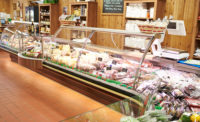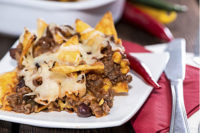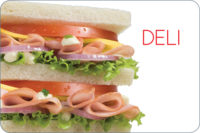
Consumers are waking up to the multi-uses of bacon.
While once positioned as primarily a breakfast food, bacon also is becoming increasingly prominent as an ingredient in lunch and dinner menus.
It is resulting in greater bacon activity at retail outlets.
Sales of refrigerated bacon totaled $2.1 billion for the 52 weeks ending May 17, 2009, up 1.26 percent from the year-earlier period, reports Information Resources Inc. (IRI), a Chicago-based market research firm.
Unit sales reached 658.3 million, up 2.72 percent.
More shoppers are learning about the added uses of bacon at foodservice locations.
Many restaurants, for instance, are adding a wider-range of bacon-related selections, including sandwiches, salads, combination dishes and sauces.
Indeed, the Oak Park, Ill.-based Foodservice Research Institute reports that restaurant chains from 2003 to 2008 increased bacon choices by 33 percent.
Bacon is being offered more frequently in breakfast entrées (up 21 percent), breakfast sandwiches (61 percent), hot sandwiches (44 percent), burgers (29 percent), pizza (24 percent) and green salads (74 percent).
Quick-service restaurant chains, with a 37 percent share, are the largest foodservice users of bacon, the Foodservice Research Institute notes. Next are midscale independents (a 20.2 percent share), casual independents (6.7 percent), quick-service independents (6.2 percent), midscale chains (6 percent) and casual chains (4 percent).
Consumers’ embrace of bacon when dining out is spurring many retailers to also expand their bacon selections, says Jarrod Sutton, director of retail marketing for the Clive, Iowa-based National Pork Board.
Merchandisers, he notes, are offering more flavors and brands, including additional fresh and pre-cooked options.
“Bacon is developing an almost cult-like following,” he states.
Dominick’s Finer Foods LLC, a chain of 80 stores in Illinois owned by Pleasant, Calif.-based Safeway Inc., offers about 20 bacon SKUs in the refrigerated case of a Glenview, Ill., outlet. Brands include Safeway, Dominick’s, Farmland, Smithfield, Hormel and Applegate Farms.
Such products are fueling the rise in at-home consumption.
Consumers in 2008 ate bacon at home an average of 18.1 times, up from 16.3 in 2005, reports The NPD Group, a Port Washington, N.Y.-based market research firm.
Bacon is eaten at home most frequently “as is” (71.1 percent of bacon meals); in a sandwich (14.2 percent); and in casseroles/hot dishes (4.7 percent), The NPD Group notes.
Retailers, meanwhile, also are increasingly including bacon in their value-added offerings.
The 2007 National Meat Case Study found that 42 percent of the value-added beef selections were bacon wraps. It was followed in popularity by seasoned beef (40 percent) and marinated beef (5 percent).
The National Meat Case Study was developed from audits conducted by Texas Tech University students during the first quarter of 2007 at 121 supermarkets and 10 club stores in 38 states and 48 markets.
Sponsors include Duncan, S.C.-based Sealed Air Corp.’s Cryovac Food Packaging Systems, the Centennial, Colo.-based National Cattlemen’s Beef Association (NCBA) and the National Pork Board.



